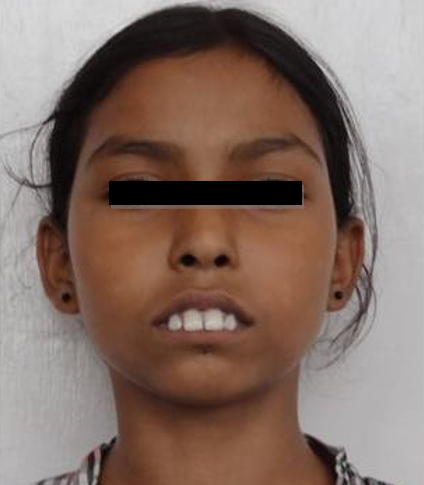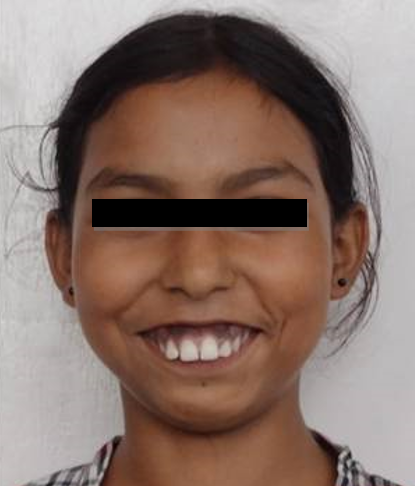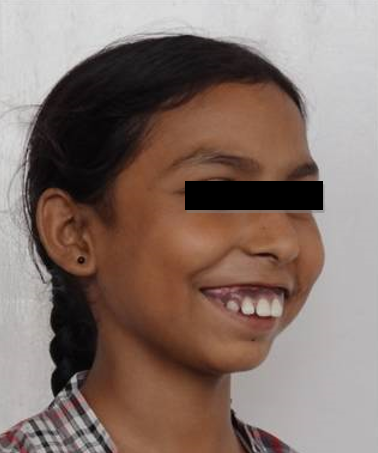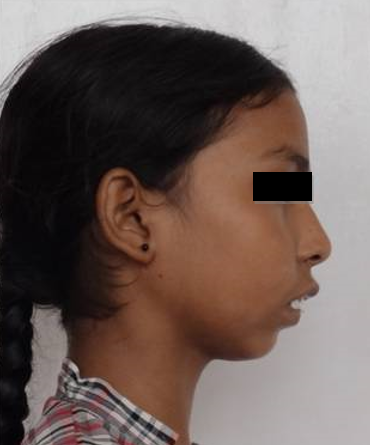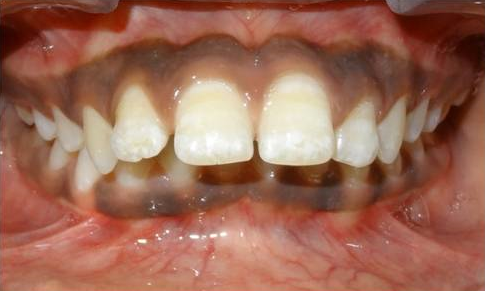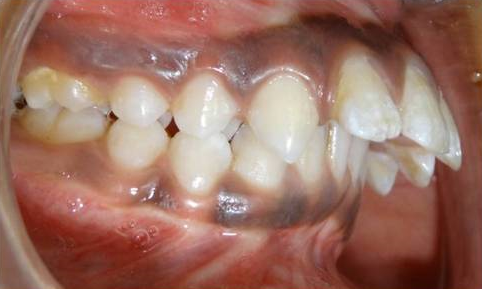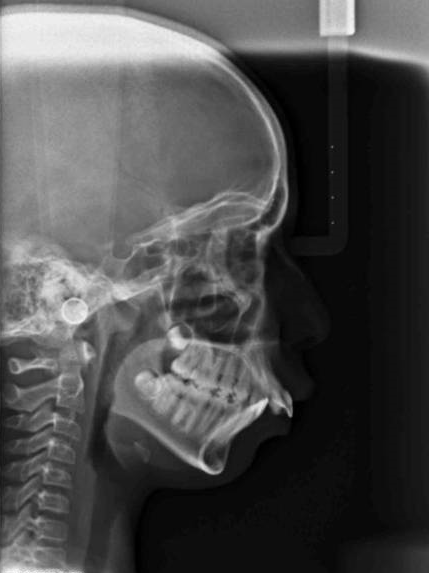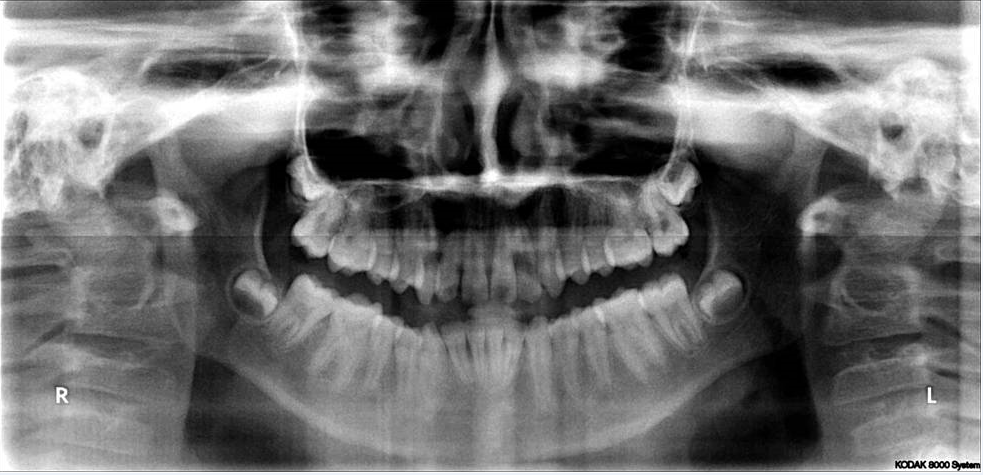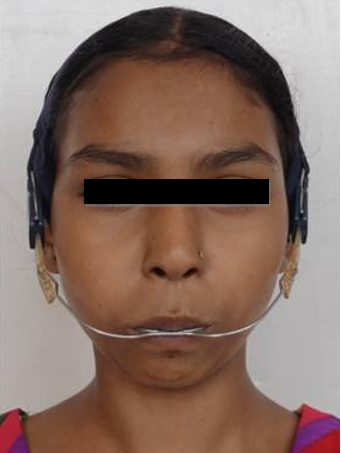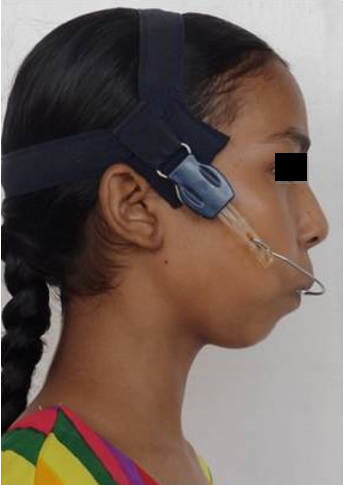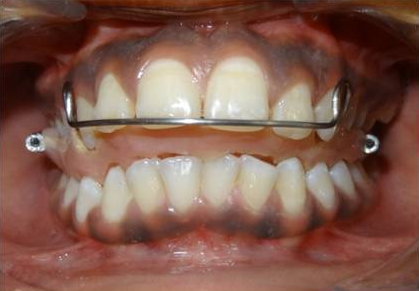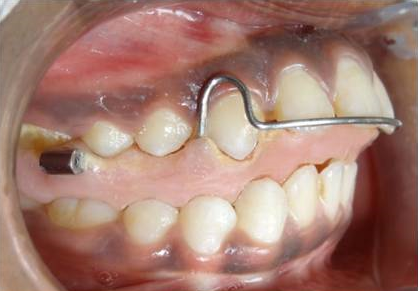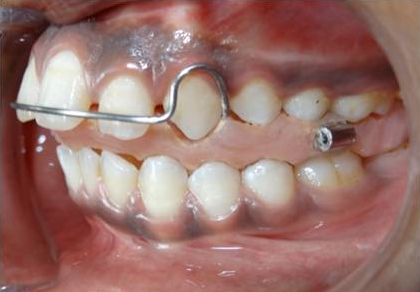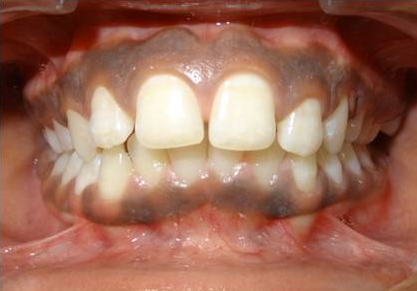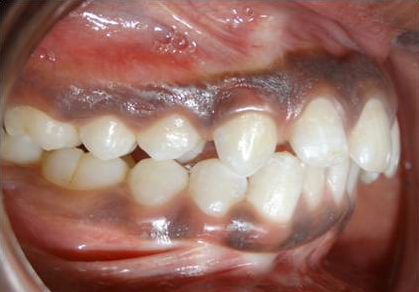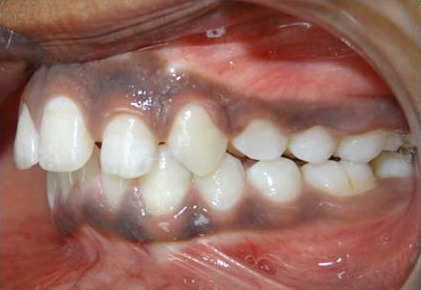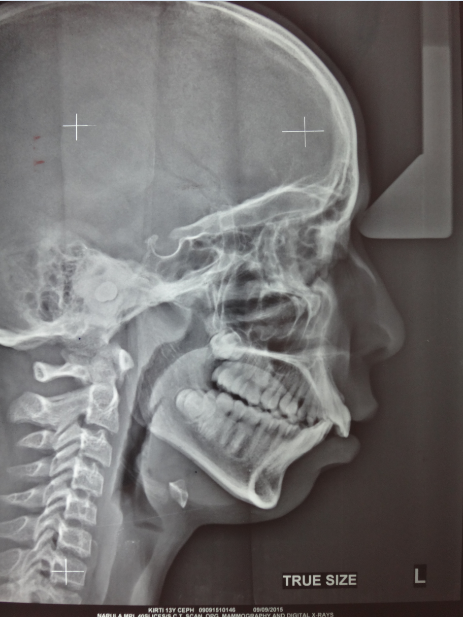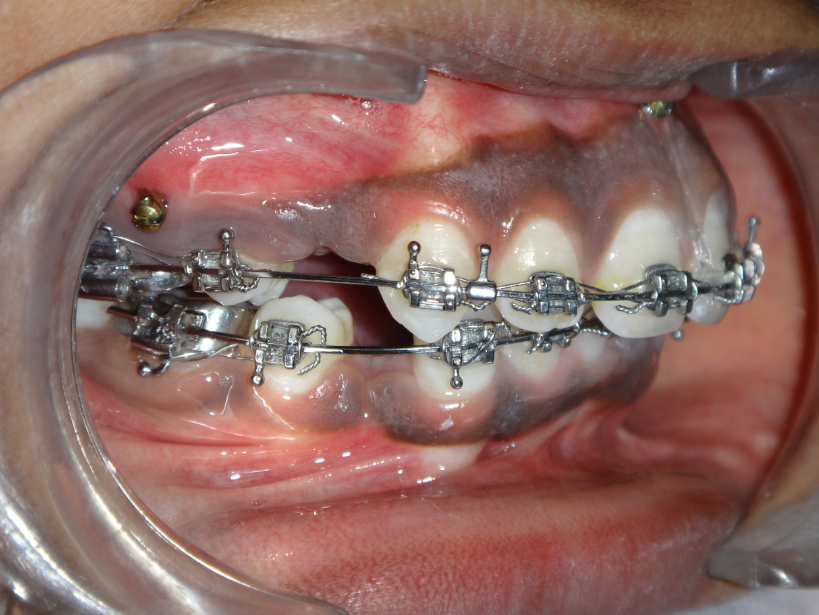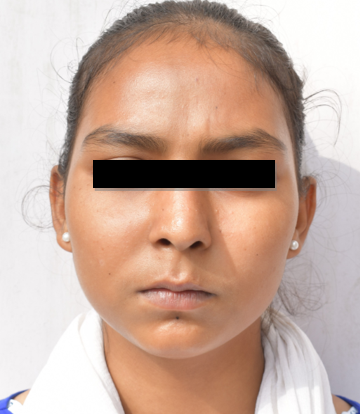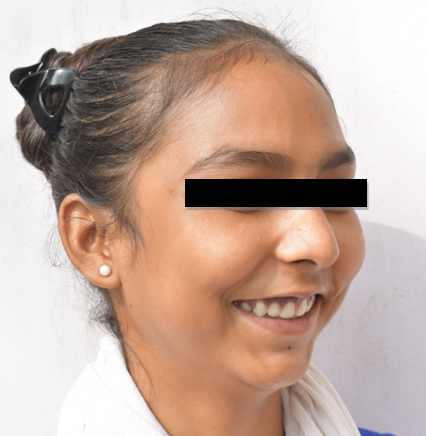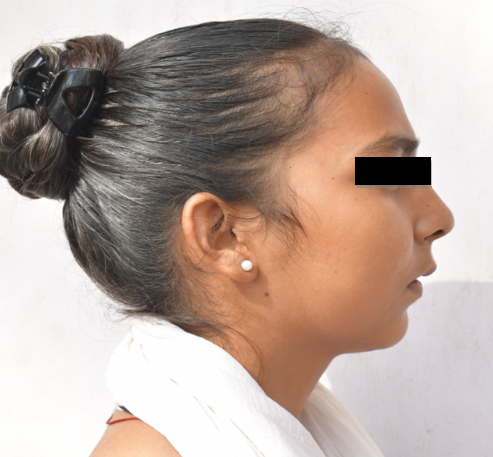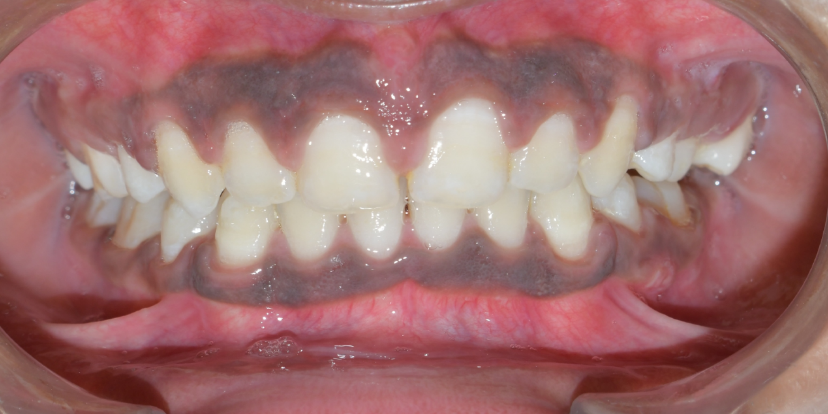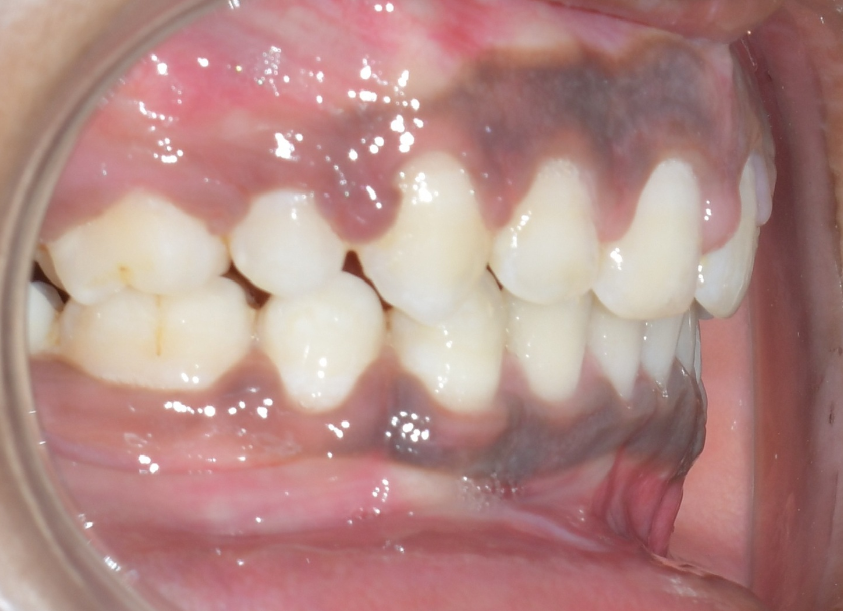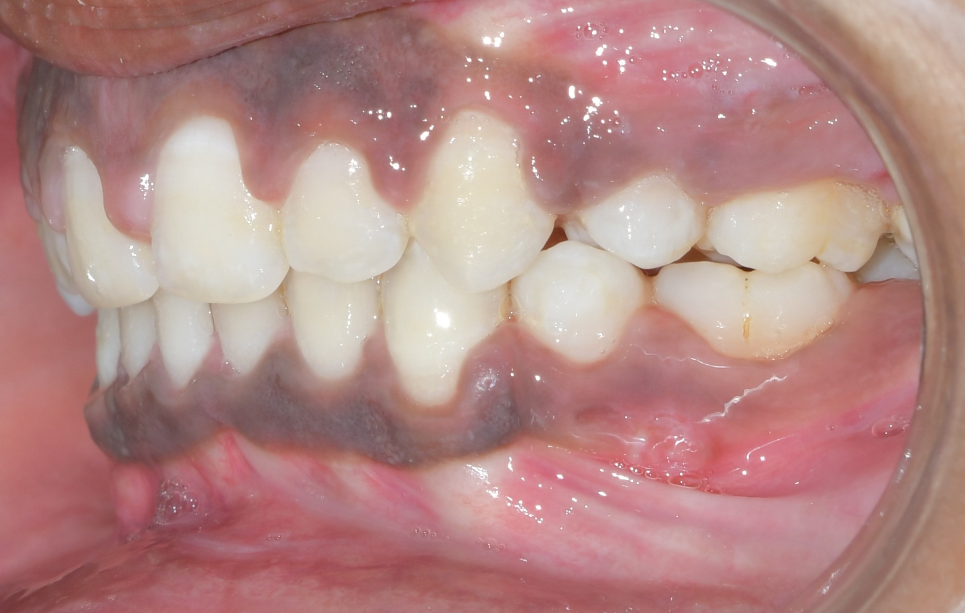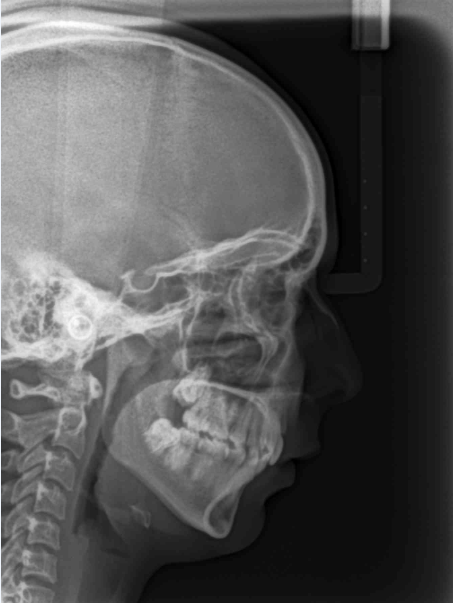Introduction
In class 11 skeletal malocclusion, mandibular retrognathism is more common as compare to maxillary prognathism or combination. Functional appliances modify growth by posturing the mandible forward These appliances whether removable or fixed are used to correct class 11 malocclusion as they provide a stimulus to posture the mandible to a new position.1 Functional appliances can influence the eruption of posterior and anterior teeth. The lower posterior teeth are left Free to erupt and the eruption of lower anterior teeth is blocked and hence the curve of spee is leveled. 2 Class 11 division 1 malocclusion when treated in the early or late mixed dentition stage mainly consist of a Bi phasic treatment procedure. In this two phased treatment, first phase is carried out in mixed dentition with potential application of maxillary functional orthopedics followed by corrective phase of fixed orthodontic treatment. 3, 4
This case report describes the correction of class 11 division 1 malocclusion in a vertically growing female with mandibular deficiency using bi phasic therapy in which activator headgear therapy was given in the first phase followed by fixed mechanotherapy in the second phase.
Diagnosis and Etiology
A twelve year old girl reported to the OPD with the chief complaint of forwardly placed anterior teeth. On extraoral examination we can see convex profile with apparent mandibular deficiency and incompetent Lips (Figure 1, Figure 2, Figure 3, Figure 4) due to proclined maxillary and mandibular incisors. Intraoral examination revealed the presence of permanent dentition with Angle’s class 11 molar relationship and an increased overjet (8.5 mm). The maxillary and mandibular arches were having moderate Crowding. Maxillary and mandibular midline were matching with facial midline.(Figure 5, Figure 6, Figure 7) The patient had skeletal class II bases on account of normal maxilla and retrognathic mandible with an underlying Average growth pattern and Angle’s class II division 1 malocclusion with overjet of 8.5 mm and overbite of 4 mm (47%). The cephalometric findings showed that maxillary and mandibular incisors were proclined The upper incisor to
NA in degrees was 43 degrees and lower incisor to NB was 35 degrees (Figure 8, Figure 9)
Treatment plan and progress
To improve profile and to redirect the mandibulo maxillary growth pattern an activator-headgear combination therapy was used (Figure 10, Figure 11, Figure 12) It was preferred due to well documented skeletal results of this combination. Construction bite for the activator was recorded with 5mm of vertical opening and 5.5 mm of horizontal advancement. After two weeks of activator wear the headgear was attached to the activator tubes in premolar- molar region of the acrylic blocks. High pull headgear was used with the force of 350 -450g per side for 10-12 hrs daily for 10 months. (Figure 12, Figure 13, Figure 14). The patient achieved Angle’s class 1 molar relationship with sagittal advancement of the mandible. (Figure 15, Figure 16, Figure 17, Figure 18) After 10 months the patient was shifted to fixed mechanotherapy and extractions of four first premolars was done for correcting the maxillary and mandibular proclination (Figure 19). The fixed orthodontics was carried out for another one year in which extraction spaces were closed and final finishing and detailing of occlusion was achieved. The post treatment extra oral photographs clearly shows the correction of facial convexity and a pleased facial profile (Figure 20, Figure 21, Figure 22). The post treatment intra oral photographs shows an Angle’s class 1 molar relationship with normal over jet and normal overbite achieved. (Figure 23, Figure 24, Figure 25). The post treatment cephalogram shows a reduced upper incisor to NA in degrees (43 degrees pretreatment to 39 degrees post treatment) and lower incisor to NB angle (35 degrees pretreatment to 27 degrees post treatment) (Figure 26).
Conclusion
Maxillary skeletal and dental effects go along with any enhancement of mandibular growth. Functional appliances usually are preferred for mixed dentition for treatment of mandibular deficiencies. Head gear is the better choice for the patient with frank maxillary excess and if the combination of mandibular deficiency exist with the maxillary excess then activator headgear therapy is the treatment of choice.5
Facial esthetics in such patients is compromised due to more convex profile, lip incompetency, more display of upper teeth, and posteriorly placed lower jaw. Reduction in facial convexity and straighter profiles resulting in improved esthetics is a treatment objective in these cases. Fixed orthodontic mechanotherapy after functional appliance results in good finishing and detailing of occlusion.


